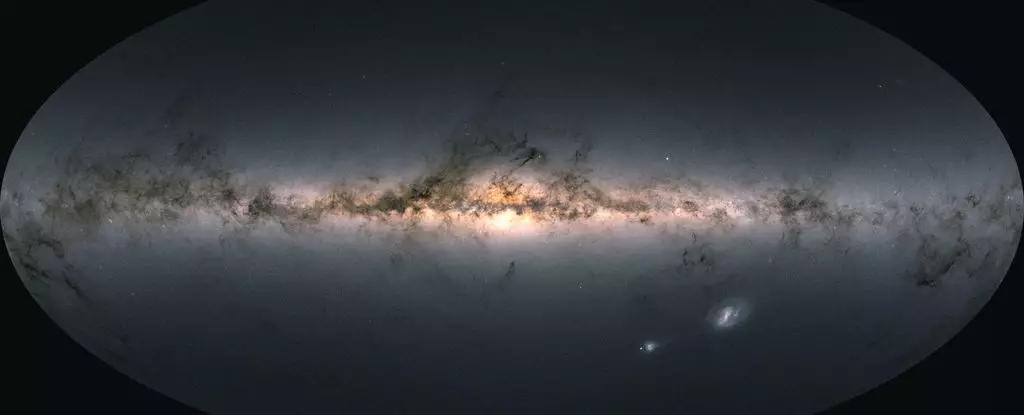Recent astronomical discoveries have revealed the presence of a colossal, yet elusive black hole concealed within the depths of the Large Magellanic Cloud (LMC), a satellite galaxy of our Milky Way. Preliminary analyses suggest that this black hole may possess a staggering mass approximately 600,000 times that of our Sun. The implications of this finding extend beyond mere curiosity; as LMC spirals closer to our galaxy, the potential for a dramatic cosmic collision looms on the horizon.
The dynamics of galaxy interactions are inherently complex, characterized by intricate gravitational forces that dictate their movement. The Large Magellanic Cloud is currently on a collision course with the Milky Way, and as this celestial ballet unfolds, our understanding of black hole formation and evolution will likely be transformed. This hidden giant in the LMC offers a unique opportunity to explore how these exotic objects transition from smaller star-sized masses to the titanic behemoths that populate the universe.
Black holes traditionally elude detection due to their nature; they do not emit light or radiation unless they actively accrete matter. In these events, surrounding gas and stellar debris can produce observable phenomena, but in the absence of such accretion, black holes remain shrouded in mystery. Astrophysicists often resort to indirect methods of detection, relying on the gravitational influence these entities exert on nearby stars.
For this latest discovery, scientists led by astrophysicist Jiwon Jesse Han employed a novel strategy by analyzing hypervelocity stars, which are stars moving significantly faster than the typical velocities within their galaxy. These rogue stars can provide critical clues about the gravitational influences they have encountered. The Hills mechanism, a theoretical three-body interaction, posits that such stars can be propelled to incredible speeds through interactions with a black hole and two accompanying stars. This theory has emerged as a promising avenue to unveil lurking black holes.
The Gaia space telescope has played a pivotal role in enhancing our understanding of the Milky Way’s stellar population. By meticulously mapping the positions and velocities of stars, Gaia has facilitated the identification of hypervelocity stars. Utilizing this influx of data, Han’s team conducted an extensive analysis of 21 hypervelocity stars, focusing on their anomalous behaviors indicative of the Hills mechanism.
This investigation revealed that a subset of these stars potentially originated from the Large Magellanic Cloud, where the hidden black hole resides. By tracing their motions backward and eliminating alternative explanations for their acceleration, the researchers pinned down the likely source of their high speeds—indications of a solar-mass black hole that appears to influence stellar dynamics profoundly.
The LMC currently exists at a distance of approximately 160,000 light-years from the Milky Way, and its eventual merger with our galaxy is estimated to take place in about 2 billion years. This prolonged interaction will serve as a fascinating case study for astronomers as it presents a tangible scenario for observing black hole growth. If the black hole is confirmed to exist, we would be witnessing an evolution that could shed light on the processes behind black hole formation and evolution.
Once the LMC merges with the Milky Way, it is anticipated that the black hole residing within it will journey toward the Milky Way’s center. Should it interact with Sagittarius A*, our galaxy’s own supermassive black hole, the result could be the creation of an even more massive black hole—a phenomenon that could offer critical insights into how black holes consume matter and evolve over cosmic timeframes.
While the detection of this potential black hole in the Large Magellanic Cloud is a significant milestone, it is only the beginning. The next steps involve corroborating the existence of this celestial body and exploring its characteristics in greater depth. Future observations and research aimed at this region of space will be crucial in confirming these findings and enhancing our understanding of the dynamics at play.
The confirmation and study of such hidden black holes are a reminder of the vast, unexplored territories within our universe. They highlight the importance of innovative research methods and collaborative efforts across the global scientific community to deepen our comprehension of the cosmos. For now, the hidden black hole in the Large Magellanic Cloud awaits its spotlight, potentially unlocking decades of knowledge about the mysterious behavior and formation of black holes throughout the universe.


Leave a Reply